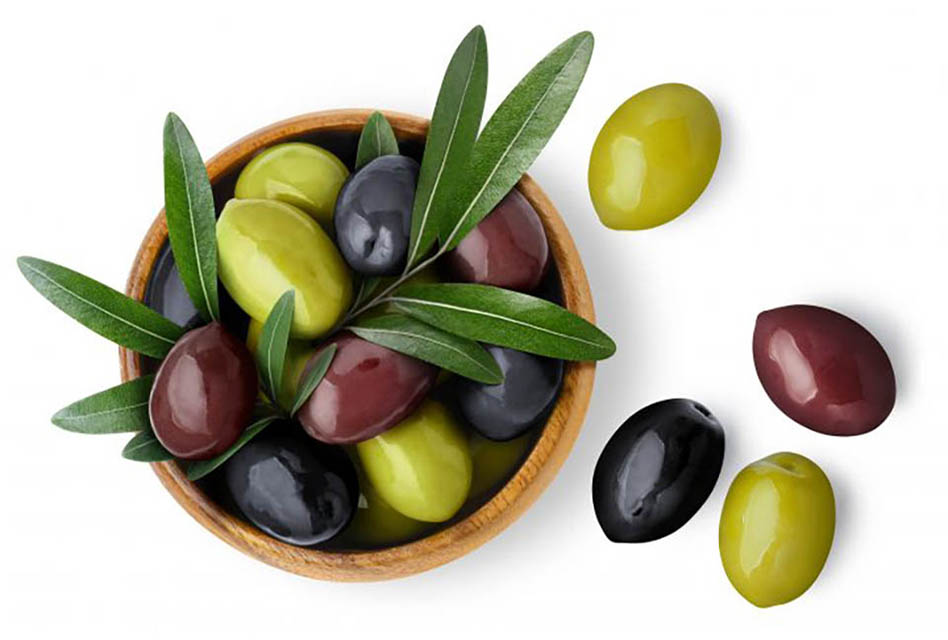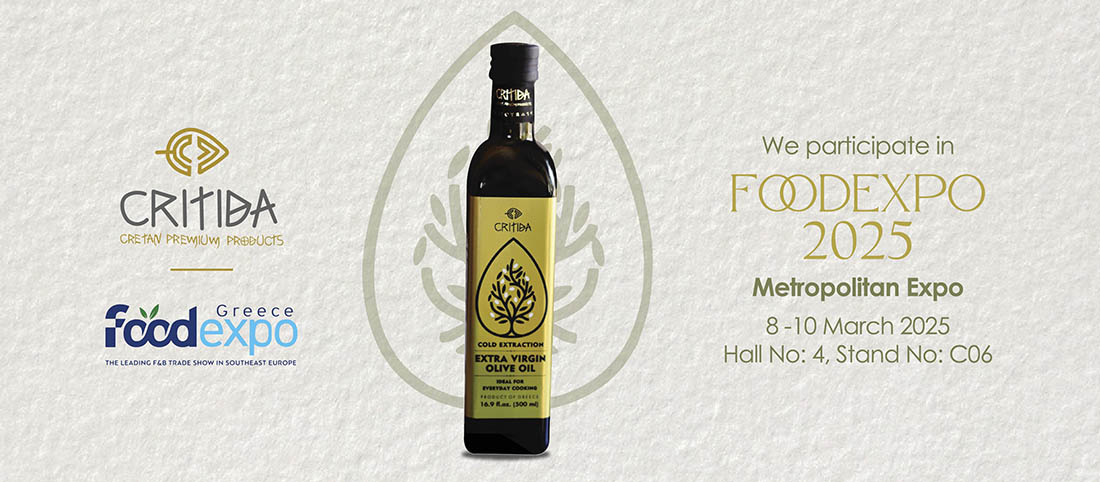Ô liu ăn Hy Lạp – TASTE ATLAS: 21 loại ô liu ăn Hy Lạp được xếp hạng trong số 50 loại ô liu ngon nhất thế giới
21 loại ô liu để bàn của Hy Lạp được xếp hạng là loại ô liu ngon nhất thế giới
21 trong số 50 loại ô liu để bàn ngon nhất thế giới được sản xuất tại Hy Lạp – 8 loại ô liu để bàn của Hy Lạp được xếp hạng trong top 10 loại ô liu để bàn ngon nhất
Theo cuộc thi trực tuyến mới nhất được thực hiện bởi tổ chức uy tín ATLAS HƯƠNG VỊ Phần lớn các loại ô liu để bàn trên toàn thế giới được xếp hạng trong top 50 đều là các loại ô liu để bàn của Hy Lạp.
Quả ô liu Hy Lạp
Các sản phẩm nông nghiệp mà Hy Lạp nổi trội trên toàn thế giới là Dầu ô liu nguyên chất, cũng như Ô liu ăn của Hy Lạp (bên cạnh phô mai Feta và các loại sản phẩm từ sữa khác). Ô liu ăn rất giàu vi chất dinh dưỡng và chất chống oxy hóa mạnh – đặc tính cảm quan độc đáo và giá trị dinh dưỡng cao của chúng đã làm tăng lượng tiêu thụ ô liu ăn trên toàn thế giới.
Những sản phẩm nổi tiếng nhất của Hy Lạp mang lại cho nước này lợi thế chiến lược toàn cầu là gì? Phô mai feta và Dầu ô liu nguyên chất Hy Lạp. Hai sản phẩm này là những sản phẩm xuất khẩu chủ đạo, do đó, khá tự nhiên trong Danh sách các loại ô liu ngon nhất thế giới của Taste Atlas, Hy Lạp thống trị.
Trong số 50 loại ô liu để ăn ngon nhất có trong danh sách, 21 vị trí liên quan đến ô liu để bàn được sản xuất tại Hy Lạp và 29 loại còn lại phân bố ở phía nam châu Âu, ngoại trừ một loại ô liu được sản xuất ở Peru. 10 loại ô liu ăn được khác đến từ Tây Ban Nha, 8 loại từ Ý, 6 loại từ Pháp, 3 loại từ Bồ Đào Nha và một loại từ Montenegro.
Nếu danh sách các loại ô liu để bàn tốt nhất này được mở rộng thành 100 loại, thì các loại ô liu để bàn của Hy Lạp sẽ dễ dàng chiếm một nửa trong số đó.
Sự kiện và số liệu xuất khẩu ô liu Hy Lạp:Theo ước tính của niên vụ 2020/2021, xuất khẩu ô liu để bàn ra ngoài EU đạt 320.829 tấn với giá trị ước tính là 868,1 triệu euro (+8,6% và +4,6% so với niên vụ trước). Vào tháng 11 của niên vụ 2021/2022, giá trị đơn vị của xuất khẩu ra ngoài EU là 281 euro cho 100kg (+2,4% so với tháng trước).
Xuất khẩu ô liu để bàn của Hy Lạp đạt 191.965 tấn và giá trị 551,4 triệu euro – SỐ LIỆU XUẤT KHẨU Ô LIU BÀN Ở EU-27
Ngày nay, Hy Lạp xuất khẩu khoảng 90% sản lượng ô liu để bàn
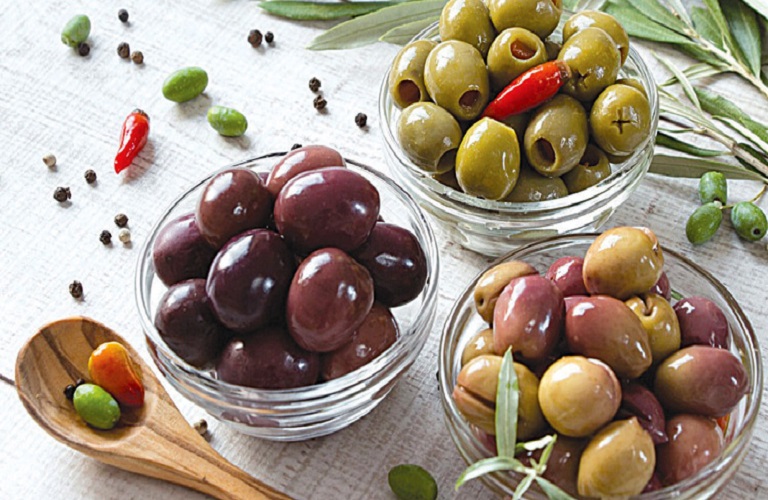
Trong số 10 loại ô liu để bàn hàng đầu thế giới, có 8 loại là ô liu để bàn của Hy Lạp - 21 trong số 50 loại ô liu để bàn ngon nhất thế giới được sản xuất tại Hy Lạp
Đây là danh sách đầy đủ và thứ hạng của các loại ô liu Hy Lạp ngon nhất nằm trong số 50 loại ô liu ngon nhất trên toàn thế giới
Chi tiết, các loại ô liu ăn kiêng của Hy Lạp được sản xuất tại Hy Lạp và đang có trên Các loại ô liu để bàn ngon nhất của TasteAtlas danh sách là:
1. Quả ô liu Kalamata – cái nổi tiếng nhất Và phổ biến ô liu ăn trên toàn thế giới. Ô liu Kalamata to, sẫm màu và nhiều nước, có hương vị nhẹ giúp tăng hương vị cho nhiều món ăn. Chúng thường được bảo quản trong giấm rượu vang đỏ, rượu vang đỏ và/hoặc dầu ô liu để có hương vị trái cây, khói và đậm đà đặc trưng. Ô liu Kalamata lý tưởng cho món salad, món khai vị, làm lớp phủ cho pizza. Những quả ô liu ăn được này chủ yếu được trồng ở các vùng Messenia Và Lạc trong Peloponnese, Hy Lạp.

Quả ô liu Kalamata Table – Ô liu Kalamon
2. Ô liu xanh Halkidiki (Chalkidiki) – có nguồn gốc từ vùng Halkidiki ở miền bắc Hy Lạp (khu vực của Macedonia), Quả ô liu xanh Halkidiki nổi tiếng với kích thước lớn, kết cấu chắc chắn và màu xanh tươi. Những quả ô liu này được hái bằng tay khi còn chưa chín và có hương vị đặc trưng, hơi chua với một chút đắng nhẹ. Ô liu Chalkidiki giàu chất chống oxy hóa, được đánh giá cao vì lợi ích sức khỏe và thường được thưởng thức trong các món ăn Địa Trung Hải, salad hoặc đơn giản là đồ ăn nhẹ. Chất lượng đặc biệt của chúng khiến chúng trở thành một trong những giống ô liu ăn được nổi tiếng nhất của Hy Lạp. Vị đầy đặn và thịt của chúng với hương vị trái cây, mặn, bơ và chua dễ chịu khiến chúng trở thành một loại ô liu để bàn tuyệt vời.

Quả ô liu xanh Halkidiki
3. Thrompa Thassos – một giống ô liu truyền thống của Hy Lạp có nguồn gốc từ đảo Thassos. Những quả ô liu đen nhỏ, nhăn nheo này được phơi khô tự nhiên trên cây, mang lại cho chúng hương vị đậm đà, mạnh mẽ với hương vị hơi ngọt và mặn. Được biết đến với giá trị dinh dưỡng cao, chúng thường được thưởng thức như một phần của chế độ ăn Địa Trung Hải. Ô liu Thrompa Thassos được ca ngợi vì kết cấu độc đáo và hương vị đậm đà, sâu lắng, khiến chúng trở thành một món ngon trong ẩm thực Hy Lạp.
4. Koroneiki – được gọi là “nữ hoàng” của dầu ô liu, Ô liu Koroneiki nhỏ nhưng chứa đầy hương vị. Chúng có hương vị tươi mát, trái cây và là thành phần chính trong khoảng một phần ba tổng số dầu ô liu của Hy Lạp. Giàu axit béo lành mạnh, những quả ô liu này chủ yếu được trồng ở Nam Peloponnese và trên đảo Crete.

Quả ô liu Koroneiki từ Hy Lạp
5. Tsunatti – Ô liu Tsunati là một giống ô liu nổi tiếng của Hy Lạp, chủ yếu được trồng ở Crete. Những quả ô liu này có kích thước từ trung bình đến lớn, với màu sẫm, đậm đà và kết cấu mịn, hơi nhờn. Được biết đến với hương vị trái cây nhẹ nhàng với một chút đắng, ô liu Tsunati thường được sử dụng để ăn và sản xuất dầu ô liu chất lượng cao. Tính linh hoạt và hương vị đặc biệt của chúng khiến chúng trở thành một loại thực phẩm chính trong ẩm thực Hy Lạp.
6. Hoa Patrinia – Ô liu Patrinia, có nguồn gốc từ vùng quanh Patras ở Hy Lạp, được đánh giá cao vì kết cấu mịn và hương vị đậm đà, thơm ngon. Những quả ô liu cỡ trung này thường có màu sẫm và có hương vị cân bằng, kết hợp giữa vị đắng nhẹ với vị ngọt tinh tế. Thường được dùng trong các món salad, món khai vị hoặc làm đồ ăn nhẹ.
7. Kolovi – Ô liu Kolovi, có nguồn gốc từ đảo Lesvos ở Hy Lạp, được trồng trong điều kiện khí hậu độc đáo của hòn đảo này. Ô liu Kolovi là một giống được ưa chuộng vì có kích thước trung bình và kết cấu chắc. Thường có màu sẫm, những quả ô liu ăn được này có hương vị đậm đà, hơi giống trái cây với một chút vị đắng. Chúng là lựa chọn phổ biến cho cả mục đích ăn và sản xuất dầu ô liu.
9. Thoumpa – ô liu Thrumpa là một loại đá quý mộc mạc từ Hy Lạp, với lớp vỏ nhăn nheo, phơi khô dưới ánh nắng mặt trời và hương vị đậm đà, giống như sự kết nối với thời xa xưa. Không giống như các loại ô liu mịn hơn, ô liu Thrumpa trải qua quá trình xử lý tự nhiên trên cây, hấp thụ tinh chất của khí hậu Aegean. Kết cấu độc đáo của chúng – gần giống như da thuộc – kết hợp với hương vị đậm đà, êm dịu, khiến chúng nổi bật trong thế giới ô liu ngâm nước muối trơn tru. Hoàn hảo cho những ai đánh giá cao hương vị có lịch sử và đặc tính.
11. Thoumpa của Chios – Ô liu Thrumpa của Chios là một giống ô liu ăn độc đáo của Hy Lạp, được phơi khô tự nhiên trên cây, mang lại cho nó kết cấu nhăn nheo đặc trưng và hương vị đậm đà, cô đặc. Được trồng trên đất giàu dinh dưỡng của hòn đảo, những ô liu đen mang đến hương vị đậm đà, hơi mặn với tông màu đất. Được biết đến với phương pháp bảo quản truyền thống, chúng là mặt hàng chủ lực trong văn hóa ẩm thực của Chios. Được trồng ở Đất giàu khoáng chất của đảo Chios, những quả ô liu này phát triển một cường độ mặn sâu khi chúng khô trên cây, tạo nên hương vị đậm đà vừa mộc mạc vừa tinh tế. Kết cấu chắc, gần như dai của chúng kết hợp tuyệt vời với phô mai béo ngậy và bánh mì mộc mạc, mang đến hương vị nguyên chất của cảnh quan Aegean.
13. Kolyreiki – Quả ô liu Kollyreiki, có nguồn gốc từ Peloponnese vùng Hy Lạp, là một giống ít được biết đến nhưng được đánh giá cao. Những quả ô liu cỡ trung này được phân biệt bởi lớp vỏ mịn và hương vị cân bằng, kết hợp vị đắng nhẹ với một chút ngọt ngào.
14. Cây Asprolia – Ô liu Asprolia, có nguồn gốc từ Hy Lạp, là một giống hiếm và tinh tế được biết đến với màu xanh nhạt và hương vị bơ nhẹ. Những quả ô liu này là được hái sớm, giữ được vị ngọt nhẹ và vị đắng nhẹ, giúp chúng khác biệt với các loại quả mạnh hơn. Ô liu Asprolia thường được dùng trong món salad hoặc làm đồ ăn nhẹ.
15. Đốm – quả ô liu bàn Dopia là một giống ô liu để bàn được đánh giá cao được trồng ở Hy Lạp, đặc biệt là ở các vùng Argolis Và Arcadia. Được biết đến với kích thước lớn và kết cấu thịt, ô liu Dopia thường được thưởng thức như một loại ô liu để bàn. Nó có hương vị nhẹ, hơi ngọt với độ đắng thấp, làm cho nó hấp dẫn đối với nhiều khẩu vị. Ô liu Dopia thường được thu hoạch khi chín hoàn toàn, tạo ra màu tím đậm đến đen và thường xuyên ngâm trong nước muối.
16. Agouromanako – tNhững viên ngọc tròn đầy, được hái bằng tay này có hương vị béo ngậy, thơm mùi bơ với một chút nước muối tinh tế, cân bằng hoàn hảo giữa vị mặn và vị chua.
18. Vườn thực vật Rovia – nằm giữa những lùm cây ngập tràn ánh nắng của Rovia, ô liu Conservolia Rovia là minh chứng cho truyền thống lâu đời và hương vị vô song. Những viên ngọc lục bảo căng mọng này tự hào có sự cân bằng tinh tế giữa nước muối và hương trái cây, với hương thảo mộc thoang thoảng trên vòm miệng. Được hái cẩn thận bằng tay và xử lý bằng các phương pháp lâu đời, mỗi quả ô liu đều thể hiện di sản ẩm thực phong phú của vùng.
19. Lianolia của Corfu – Cây ô liu Lianolia, có nguồn gốc từ Hy Lạp đảo Corfu, là một giống đa năng được sử dụng cho cả hai mục đích: lấy dầu và cũng được sử dụng làm ô liu ăn. Là một loại ô liu ăn, Lianolia được biết đến với kích thước nhỏ đến trung bình và hình bầu dục đặc biệt. Nó cung cấp hương vị cân bằng với hương trái cây nhẹ và một chút đắng. Thường được thu hoạch khi chín hoàn toàn, Ô liu ăn Lianolia có màu từ tím đậm đến đen và được ngâm trong nước muối.
20. Cây Conservolia Stylidas – Ô liu để bàn Conservolia Stylidas nổi bật nhờ đặc điểm cảm quan độc đáo của chúng, được tăng cường nhờ điều kiện khí hậu lý tưởng của khu vực. Được trồng chủ yếu ở Trung Hy Lạp, những quả ô liu này có hương vị trái cây đậm đà với chút hương rượu vang đỏ, được cho là do men tự nhiên trên vỏ của chúng trong quá trình chế biến trong nước muối biển. Những quả ô liu này lớn và hình bầu dục, với phần thịt chắc nhưng mềm, dễ tách khỏi hạt, khiến chúng đặc biệt hấp dẫn khi sử dụng trên bàn ăn. Ngoài ra, tính linh hoạt của ô liu cho phép chúng được chế biến thành cả loại xanh và đen, phục vụ cho nhiều ứng dụng ẩm thực khác nhau. Khả năng chống co ngót và kỹ thuật thu hoạch cụ thể được sử dụng góp phần tạo nên chất lượng và hương vị đặc trưng của chúng.
21. Cây kim ngân hoa – cây ô liu ăn Conservolia Atalantis chủ yếu được trồng ở vùng Atalanti, Hy Lạp, nơi nó phát triển mạnh trong khí hậu Địa Trung Hải. Các phương pháp canh tác thường bao gồm các hoạt động canh tác truyền thống, bao gồm hái bằng tay ô liu khi đạt độ chín cao nhất. Giống ô liu này có đặc điểm là hình bầu dục, màu tím đậm đến đen, kết cấu chắc và hương vị hạt dẻ dịu nhẹ. Độ đắng thấp và hàm lượng dầu cao khiến nó rất linh hoạt để sử dụng trên bàn ăn và chiết xuất dầu. Trong sử dụng ẩm thực, ô liu Conservolia Atalantis thường được thưởng thức như một món ăn nhẹ độc lập, bên cạnh việc sử dụng trong nhiều món ăn khác nhau. Điều làm cho ô liu Conservolia Atalantis trở nên đặc biệt là hương vị độc đáo, hàm lượng dầu cao và các phương pháp canh tác truyền thống được sử dụng, tất cả đều góp phần tạo nên hương vị đặc biệt và tính linh hoạt trong ẩm thực.
33. Vườn nghệ thuật Conservolia – Ô liu để bàn Conservolia Artas là một giống ô liu nổi tiếng với kết cấu thịt phong phú và hương vị sống động. Được trồng chủ yếu ở vùng Nghệ thuật, Hy Lạp, những quả ô liu này được tôn sùng vì hương vị độc đáo và tính linh hoạt của chúng. Với màu tím đậm, chúng thường được thưởng thức như một món ăn nhẹ độc lập, hoặc kết hợp vào salad, nước chấm hoặc làm lớp phủ cho pizza và bánh sandwich. Ô liu Conservolia Artas cũng thường được sử dụng để sản xuất dầu ô liu chất lượng cao. Ô liu để bàn Conservolia Atalantis được biết đến với hình bầu dục đặc biệt và hương vị dịu nhẹ, hơi giống hạt và vỏ của nó có màu tím đậm đến đen tuyệt đẹp. Những quả ô liu này được đánh giá cao vì độ đắng thấp và hàm lượng dầu cao, khiến chúng trở nên lý tưởng cho cả việc ăn uống và chiết xuất dầu. Giống Conservolia Atalantis thường được thu hoạch vào cuối mùa thu đến đầu mùa đông.
34. Khu bảo tồn Pelion – Khi sự quan tâm đến các thành phần dành cho người sành ăn tăng lên, ô liu để bàn Conservolia of Pelion nổi lên như một loại ô liu nhất định phải thử đối với những người đam mê ẩm thực. Conservolia of Pelion là một giống ô liu để bàn đáng chú ý được biết đến với thói quen sinh trưởng mạnh mẽ và trọng lượng quả cao, trung bình khoảng 4,63 gam mỗi quả ô liu. Giống cây trồng này được đặc trưng bởi hình cầu và một số lượng đáng kể các rãnh hình bầu dục nhọn trên bề mặt quả. Nó phát triển mạnh trong điều kiện nông nghiệp được cung cấp nước mưa, thể hiện mô hình tăng trưởng theo thứ bậc. Mặc dù hàm lượng dầu của nó tương đối thấp so với một số giống khác, ô liu để bàn Conservolia đặc biệt được đánh giá cao vì công dụng ẩm thực của nó do hương vị và kết cấu mạnh mẽ của nó, khiến nó trở thành lựa chọn ưa thích cho ô liu để bàn.
35. Vườn thực vật Afissa – thường được gọi là Amfissa ô liu, ô liu Konservolia là loại ô liu chủ yếu trên bàn ăn của người Hy Lạp. Mặc dù hiếm khi được dùng để lấy dầu, nhưng chúng được ưa chuộng vì kết cấu giòn và mọng nước. Những quả ô liu này được trồng ở miền trung Hy Lạp và vùng phía bắc Epirus, cũng như trên một số đảo của Hy Lạp. Tùy thuộc vào thời điểm thu hoạch và độ chín, chúng có thể có màu xanh lá cây, chuyển tiếp hoặc đen. Được hái từ cành khi rất chín, chúng từ từ ngâm nước muối để tạo ra hương vị trái cây nhẹ và độ mềm tan trong miệng. Trong Hy Lạp, ô liu Amfissa thường được dùng trong súp hoặc món hầm, nhưng cũng rất tuyệt khi dùng kèm với pho mát và thịt xông khói.
40. Thoumpa của Ambadia của Rethymnon – ô liu Thoumpa của Ambadia, một vùng ở Rethymnon, đảo Crete, là một giống độc đáo được ca ngợi vì vẻ ngoài nhăn nheo, phơi khô tự nhiên và hương vị đậm đà, mạnh mẽ. Được trồng trong cảnh quan gồ ghề của Ambadia, những quả ô liu này có hương vị đất, mặn, với hậu vị hơi ngọt, thể hiện quá trình xử lý truyền thống mà chúng trải qua trên cây. Ô liu Thoumpa là sự phản ánh chân thực về di sản nông nghiệp của Crete và hương vị đậm đà, thường được sử dụng trong các món ăn địa phương hoặc thưởng thức cùng bánh mì và pho mát.
Hy Lạp là quê hương của một số giống ô liu nổi tiếng, mỗi loại có đặc điểm riêng biệt.
Hương vịAtlas là một hướng dẫn du lịch trực tuyến trải nghiệm về ẩm thực truyền thống tập hợp các công thức nấu ăn chính thống, đánh giá của các nhà phê bình ẩm thực và các bài báo nghiên cứu về các thành phần và món ăn phổ biến. Tự mô tả mình là "một tập bản đồ thế giới về các món ăn truyền thống, thành phần địa phương và các nhà hàng chính thống", nó có một bản đồ ẩm thực toàn cầu tương tác với các biểu tượng món ăn được hiển thị ở các khu vực tương ứng và được cho là chứa gần 10.000 món ăn, đồ uống và thành phần, cũng như 9.000 nhà hàng (NGUỒN: Wikipedia)
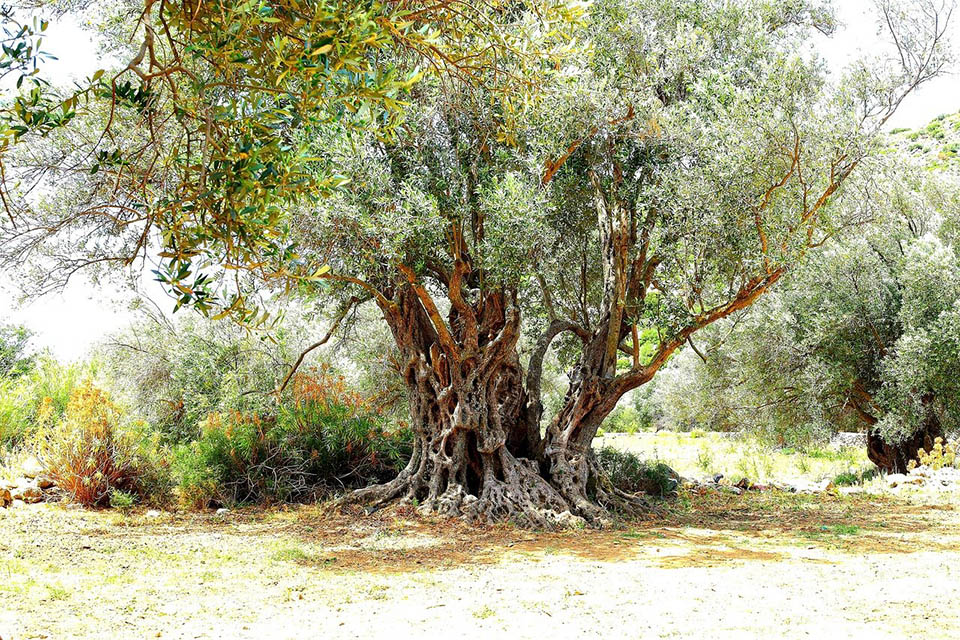
Sự khác biệt và công dụng giữa ô liu xanh và ô liu đen
Quả ô liu để bàn có nhiều loại, mỗi loại có chất lượng riêng biệt. Xem ô liu xanh và đen khác nhau như thế nào.
Quả ô liu xanh là gì?
Ô liu xanh là quả chưa chín của cây ô liu được thu hoạch trước khi chín. Để loại bỏ vị đắng tự nhiên, chúng được ngâm trong dung dịch kiềm trước khi ngâm nước muối. Chúng giàu chất chống oxy hóa, chất béo lành mạnh và vitamin A và E. Các loại ô liu xanh phổ biến bao gồm Halkidiki, Manzanilla và Picholine. Những quả ô liu này thường được bỏ hạt và có thể chứa các thành phần như phô mai, pimento, jalapeño, nụ bạch hoa, cá cơm hoặc các loại hạt.
Công dụng của quả ô liu xanh
Ô liu xanh khá mặn do hàm lượng natri cao, khiến chúng trở thành một thành phần bổ sung mặn cho nhiều món ăn. Chúng có thể ăn riêng, thêm vào salad hoặc mì ống, làm thành tapenade hoặc dùng làm đồ trang trí trong rượu martini. Ô liu xanh Halkidiki là loại ô liu xanh ăn được phổ biến nhất ở Hy Lạp và là một trong những loại ô liu xanh phổ biến nhất trên toàn thế giới.
Quả ô liu đen là gì?
Ô liu đen chín hoàn toàn khi được hái, chuyển từ màu xanh sang các sắc nâu sẫm hoặc đen. Sau khi thu hoạch, chúng được xử lý, quá trình này có thể làm sẫm màu thêm. Giống như ô liu xanh, ô liu đen rất giàu chất béo không bão hòa đơn, canxi, kali và vitamin E và A. Các loại ô liu đen phổ biến bao gồm Kalamata (ô liu Hy Lạp có hương vị nhẹ và màu nâu tím) và Gaeta (ô liu Ý có hương vị nhẹ hơn, thường bị nhầm lẫn với Kalamatas). Ô liu ăn Kalamata (được đặt theo tên thành phố Kalamata ở phía nam Peloponnese, Hy Lạp) là một trong những loại ô liu ăn phổ biến nhất và được đánh giá cao nhất trên toàn thế giới, có hương vị nhẹ và màu nâu tím.
Công dụng của quả ô liu đen
Ô liu đen thường được dùng làm đồ ăn nhẹ hoặc món khai vị, và chúng là sự bổ sung tuyệt vời cho các đĩa phô mai và đĩa thịt nguội. Chúng thường được dùng làm lớp phủ pizza và thêm hương vị chua cho các món salad và mì ống. Ô liu đen luôn được dùng trong món salad Hy Lạp.
Ô liu xanh và đen: Sự khác biệt chính
Có một số yếu tố phân biệt ô liu xanh với ô liu đen:
• Màu sắc:Ô liu xanh có màu xanh lá cây, trong khi ô liu đen có thể có màu từ nâu nhạt đến đen đậm, đôi khi có tông màu tím hoặc nâu.
• Hương vị:Ô liu xanh có nhiều natri hơn, khiến chúng mặn hơn và đắng hơn so với ô liu đen dịu hơn.
• Độ chín:Ô liu xanh chưa chín khi được thu hoạch, trong khi ô liu đen được hái sau khi chín.
• Xử lý:Ô liu xanh được lên men trong dung dịch kiềm trước khi ngâm nước muối, trong khi ô liu đen được lên men ngay lập tức.
• Giá trị dinh dưỡng:Cả hai loại đều bổ dưỡng, nhưng ô liu xanh chứa nhiều polyphenol hơn một chút, mang lại lợi ích chống oxy hóa và chống viêm.
Bạn có thể thay thế cái này cho cái kia không?
Do sự khác biệt về hương vị, ô liu xanh và đen không phải lúc nào cũng có thể thay thế cho nhau. Nếu sử dụng ô liu làm đồ ăn nhẹ, việc thay thế một loại bằng loại kia là ổn. Tuy nhiên, nếu công thức yêu cầu một loại cụ thể, tốt nhất là sử dụng loại đó vì hương vị riêng biệt của nó. Ví dụ, khi thay thế ô liu đen bằng ô liu xanh, tránh nấu quá chín để giữ nguyên hương vị. Tương tự như vậy, ô liu xanh có thể được nấu để giảm vị đắng, nhưng hãy lưu ý điều chỉnh lượng muối trong món ăn của bạn.
THỊ TRƯỜNG DẦU Ô LIU VÀ Ô LIU ĂN THẾ GIỚI – DỮ LIỆU TỪ THÁNG 8 NĂM 2024
Tình hình thị trường ô liu để bàn (dữ liệu: THÁNG 8 NĂM 2024)

Quả ô liu để bàn – dữ liệu xuất nhập khẩu quốc tế – 2024
Lượng ô liu để bàn nhập khẩu đã tăng 12,3% trên các thị trường chính kể từ đầu năm thu hoạch hiện tại (tháng 9 năm 2023 đến tháng 6 năm 2024). Lượng ô liu nhập khẩu từ Hoa Kỳ đã giảm 2,7%, trong khi lượng ô liu nhập khẩu từ Brazil đã tăng 3,6%.
Hoa Kỳ (US) nhập khẩu trung bình hơn 150.000 tấn ô liu để bàn mỗi năm. Các nhà cung cấp ô liu để bàn chính cho Hoa Kỳ là Tây Ban Nha (39%), Hy Lạp (25%) và Maroc (10%).
NGUỒN: Hội đồng ô liu quốc tế – https://www.internationaloliveoil.org/world-market-of-olive-oil-and-table-olives-data-from-august-2024/
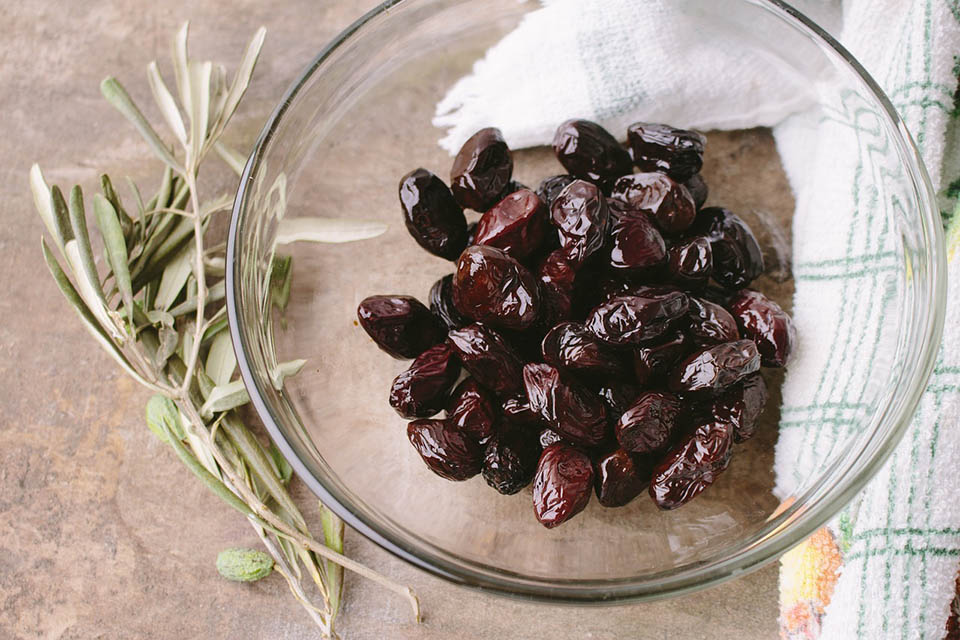
Quả ô liu để bàn và sức khỏe: một đánh giá
Các tiêu thụ ô liu để bàn ở một lượng vừa phải nên được khuyến khích trong bối cảnh của một chế độ ăn uống lành mạnh, như một món ăn nhẹ hoặc món khai vị. Quả ô liu để bàn có một giá trị dinh dưỡng quan trọng do giàu MUFA, chất xơ, vitamin E và các hợp chất phenolic.
“Ô liu ăn, một sản phẩm của cây ô liu (Olea europaea L.), là một sản phẩm lên men quan trọng của chế độ ăn Địa Trung Hải. Các yếu tố nông học, đặc biệt là giống cây trồng, giai đoạn chín và phương pháp chế biến được sử dụng là những yếu tố chính ảnh hưởng đến thành phần dinh dưỡng và phi dinh dưỡng của ô liu ăn và các đặc tính cảm quan của chúng. Giá trị dinh dưỡng quan trọng của sản phẩm này là do nó giàu chất béo không bão hòa đơn (MUFA), chủ yếu là axit oleic, chất xơ và vitamin E cùng với sự hiện diện của một số hóa chất thực vật. Trong số đó, hydroxytyrosol (HT) là hợp chất phenolic chính có trong tất cả các loại ô liu ăn. Có rất ít nghiên cứu trong ống nghiệm, trong cơ thể sống và trên người về ô liu ăn. Đánh giá này tập trung toàn diện vào các chất dinh dưỡng và hàm lượng hợp chất hoạt tính sinh học cũng như các lợi ích sức khỏe được chỉ định cho ô liu ăn. Các lợi ích sức khỏe có thể có liên quan đến việc tiêu thụ chúng được cho là chủ yếu liên quan đến tác dụng của MUFA đối với sức khỏe tim mạch, khả năng chống oxy hóa (AO) của vitamin E và vai trò của nó trong việc bảo vệ cơ thể khỏi tổn thương oxy hóa và các hoạt động chống viêm và AO của HT”
NGUỒN: Thư viện Y khoa Quốc gia > Quả ô liu để bàn và sức khỏe Bài viết từ Tạp chí khoa học dinh dưỡng – được cung cấp bởi Nhà xuất bản Đại học Cambridge
Viện Y tế Quốc gia (Viện Y tế Quốc gia) > NCBI (Trung tâm Thông tin Công nghệ sinh học Quốc gia: thúc đẩy khoa học và sức khỏe bằng cách cung cấp quyền truy cập vào thông tin y sinh và bộ gen)
XEM THÊM: Tiêu thụ dầu ô liu và sức khỏe con người: Một bài đánh giá tường thuật
Quả ô liu Hy Lạp và giá trị chức năng của chúng
“Một trong những chế phẩm thương mại quan trọng nhất của ô liu để bàn trên thị trường quốc tế là ô liu đen tự nhiên ngâm nước muối. Ô liu để bàn là loại quả có giá trị dinh dưỡng và chức năng cao. Ngoài giá trị dinh dưỡng, ô liu còn chứa các hợp chất thứ cấp, chẳng hạn như phenolic, tocopherol và triterpene, thường được cho là có đặc tính chức năng. Chương này thảo luận về một số nghiên cứu tập trung vào hàm lượng các thành phần như vậy trong ô liu để bàn của các giống ô liu Hy Lạp. Phenolic là một loại thành phần chính có đặc tính sinh học quan trọng có trong quả hạch ô liu. Ngoài việc đóng góp vào đặc tính cảm quan và thơm của ô liu, chúng còn được coi là chất chống oxy hóa tự nhiên do đặc tính khử của chúng như chất cho hydro hoặc electron.”
Thư viện trực tuyến WILLEY: Quả ô liu Hy Lạp và giá trị chức năng của chúng
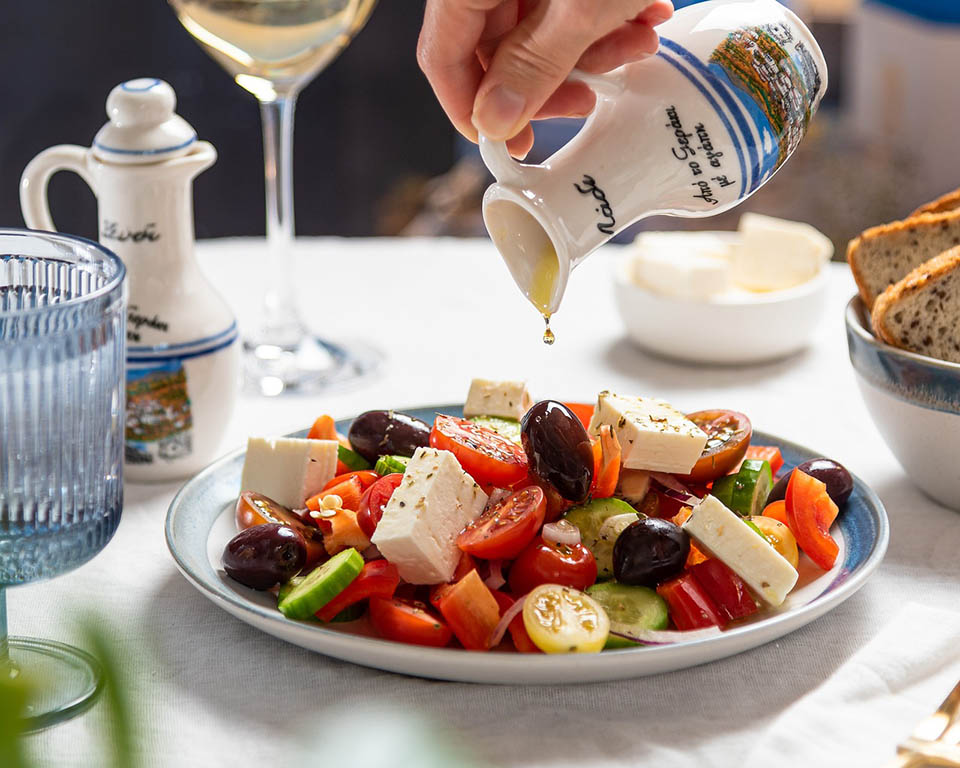
Ẩm thực du lịch Hy Lạp: Ô liu Hy Lạp và cách chế biến chúng cho bàn ăn của bạn
Các bài viết liên quan đến Ô liu Hy Lạp
–
Các loại ô liu Hy Lạp khác nhau
–
Các loại ô liu ăn Hy Lạp khác nhau, các giống ô liu nổi tiếng được trồng ở Hy Lạp
–
Công dụng của dầu ô liu đối với sức khỏe con người
Dầu ô liu mang lại nhiều lợi ích cho sức khỏe vì nó chứa nhiều chất béo bão hòa đơn lành mạnh và chất chống oxy hóa. Nó cũng có đặc tính chống viêm. Những ảnh hưởng sức khỏe của chất béo trong chế độ ăn uống đang gây tranh cãi. Tuy nhiên, các chuyên gia đều đồng ý rằng dầu ôliu – đặc biệt là dầu extra virgin – rất tốt cho sức khỏe con người. 11 lợi ích sức khỏe của dầu ô liu đã được nghiên cứu khoa học chứng minh.
–
Quả ô liu để bàn không chỉ là thực phẩm lên men
Ô liu để bàn là một trong những loại thực phẩm lên men từ thực vật lâu đời nhất ở vùng Địa Trung Hải. Bên cạnh tác động kinh tế, ô liu để bàn lên men còn là một loại thực phẩm lành mạnh quan trọng trong chế độ ăn Địa Trung Hải, vì hàm lượng cao các hợp chất có hoạt tính sinh học và tăng cường sức khỏe.
–
Hy Lạp ca ngợi sự hiện diện mạnh mẽ trên thị trường ô liu của Hoa Kỳ khi xuất khẩu tăng
Hy Lạp đứng thứ hai trong số các nước xuất khẩu ô liu để bàn sang Hoa Kỳ trong nửa đầu năm 2022 nhưng lại nhận được mức giá cao nhất (Nguồn: Dầu ô liu lần).
–
Sản phẩm ô liu Hy Lạp cao cấp của CRITIDA
–
Nấu một bữa tiệc cổ điển: chín công thức nấu ăn từ Hy Lạp và La Mã cổ đại
–
Công thức làm salad Hy Lạp ngon nhất: Loại ô liu nào là tốt nhất để dùng?
–
Cách làm món Salad Hy Lạp chính thống (Horiatiki), tất cả những gì bạn cần biết về Salad Hy Lạp
Ô LIU HY LẠP – Tổ chức ô liu liên ngành
Tổ chức ô liu liên ngành (DOEPEL) được thành lập vào ngày 29 tháng 12 năm 2014 để đáp ứng nhu cầu cấp thiết về một cơ quan chuyên môn đại diện cho ngành ô liu Hy Lạp- Đồ họa thông tin về quả ô liu Hy Lạp


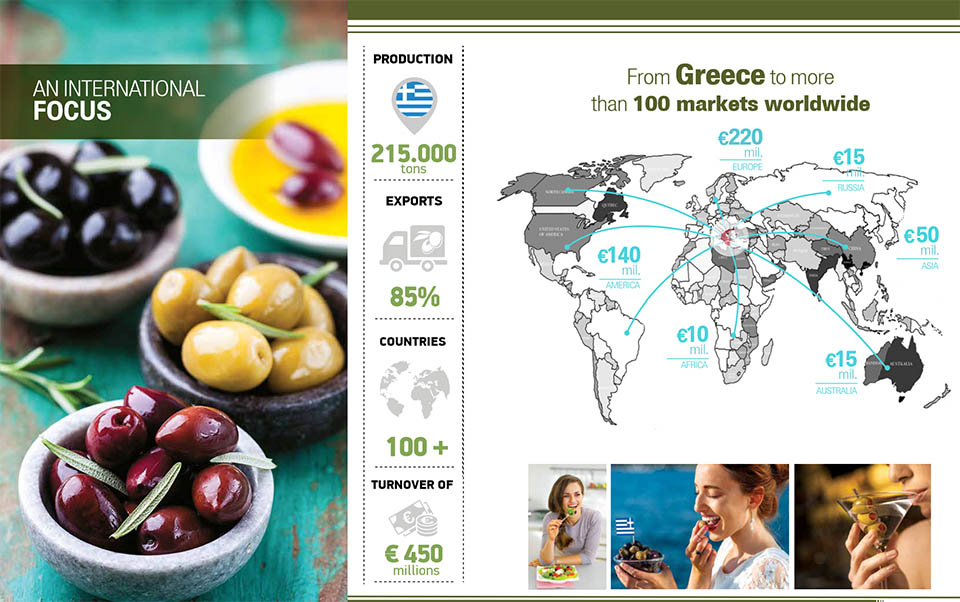
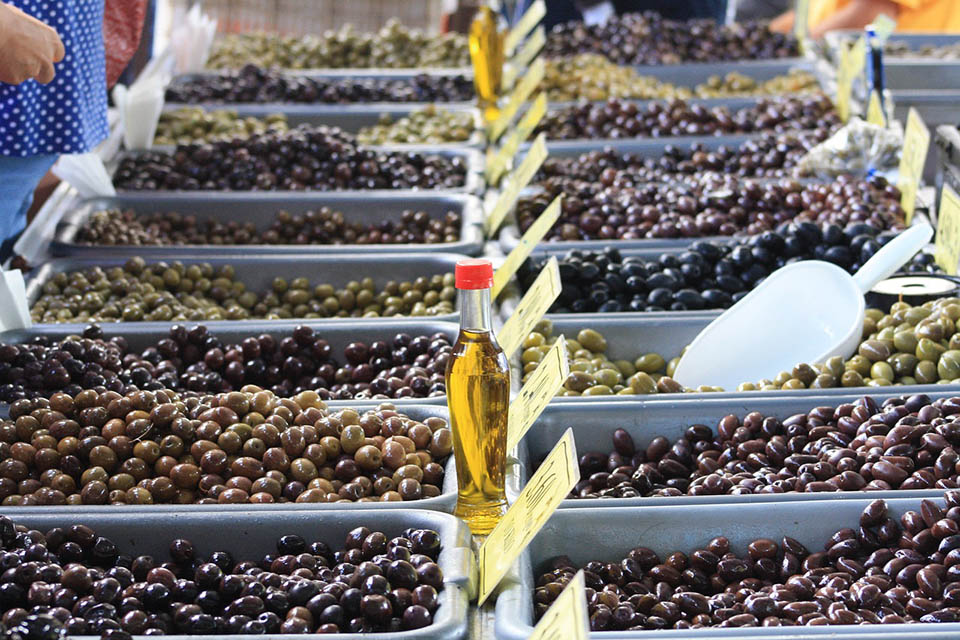
Ô liu Nho khô – của Stella LoveCook
Sự kiện nếm thử ô liu bàn châu Âu tại Hoa Kỳ
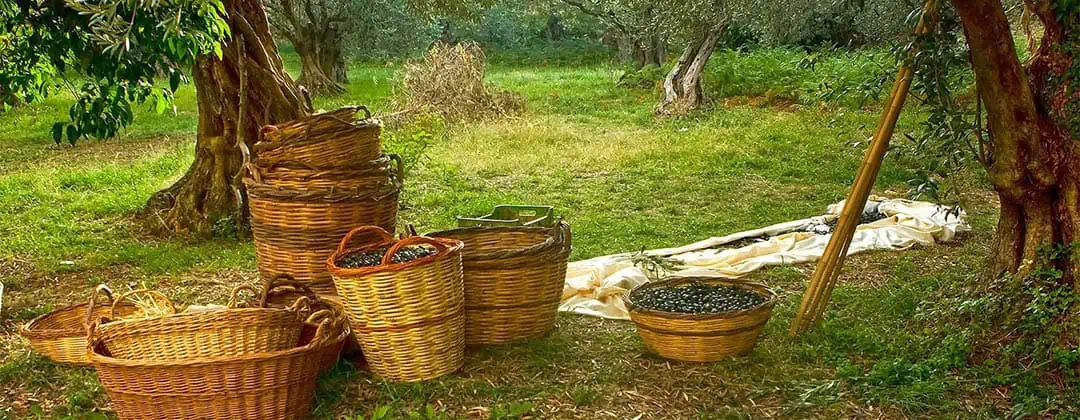
DẦU OLIVE CRITIDA BIO CRETAN - Nhà sản xuất các sản phẩm ẩm thực Cretan cao cấp: Sản phẩm thực phẩm của chúng tôi được XUẤT KHẨU TRÊN TOÀN THẾ GIỚI tới hơn 40 quốc gia, kể từ năm 1998 - Hãy tham gia cùng chúng tôi!
Chúng tôi là một công ty gia đình có lịch sử hàng thế kỷ (thành lập từ năm 1912) chuyên sản xuất Dầu Ô liu EVOO trên đảo CRETE ở HY LẠP. Các sản phẩm dầu ô liu nguyên chất và thực phẩm ẩm thực Cretan cao cấp của chúng tôi được xuất khẩu tại hơn 40 quốc gia trên toàn thế giới tới mạng lưới đối tác được lựa chọn cẩn thận. LIÊN HỆ VỚI CHÚNG TÔI, HÃY LÀ ĐỐI TÁC KINH DOANH CÓ GIÁ TRỊ TIẾP THEO CỦA CHÚNG TÔI! cho Dầu ô liu nguyên chất (EVOO) - Dầu ô liu nguyên chất hữu cơ (Bio) (Organic EVOO) - Ô liu để bàn kiểu Hy Lạp - Giấm balsamic - Đặc sản, tất cả từ CRETE GREECE
bài viết liên quan
Foodexpo Greece 2025 – Hội chợ thương mại thực phẩm và đồ uống – Athens, Hy Lạp 08-10 tháng 3 năm 2025
Công ty chúng tôi sẽ tham gia “Foodexpo Greece 2025”, sẽ diễn ra tại Athens
Tripadvisor: Crete là điểm đến ẩm thực tốt thứ 2 trên thế giới vào năm 2023
Crete là điểm đến ẩm thực tốt thứ hai trên thế giới vào năm 2023 (độc giả TripAdvisor – Travell
Dầu ô liu Critida Bio Cretan tại Biofach 2023
Critida Bio Cretan Olive Oil sẽ tham gia hội chợ thương mại lớn nhất thế giới Biofach 2023
Hội chợ Thương mại Thực phẩm & Đồ uống Anuga 2023 – Cologne, Đức 7-11 tháng 10 năm 2023
Chúng tôi xin thông báo với bạn rằng công ty Critida – Bio Cretan Olive Oil của chúng tôi sẽ tham gia

